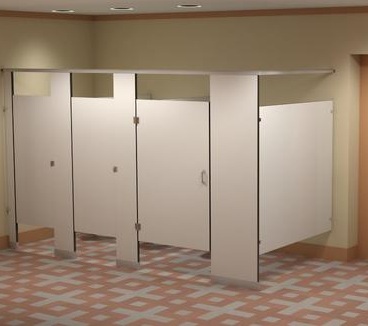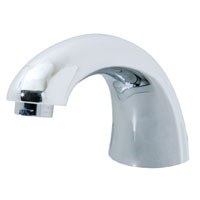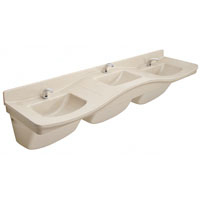|

 What is LEED? It is the abbreviated version of “Leadership in Energy and Environmental Design (LEED) Green Building Rating System.” LEED is a set of standards that apply to buildings and building construction that are designed to minimize or improve the resource use and environmental impact of buildings. LEED was established by the U.S. Green Building Council (USGBC) to develop these standards and achieve the goals of resource and environmental preservation. What is LEED? It is the abbreviated version of “Leadership in Energy and Environmental Design (LEED) Green Building Rating System.” LEED is a set of standards that apply to buildings and building construction that are designed to minimize or improve the resource use and environmental impact of buildings. LEED was established by the U.S. Green Building Council (USGBC) to develop these standards and achieve the goals of resource and environmental preservation.
LEED was established by the U.S. Green Building Council (USGBC) to achieve multiple goals by use of these standards. Often the phrase “environmentally sustainable construction” is used to refer to the standards and goals of LEED.
Since man-made buildings consume, use or alter the most precious of our resources - land, energy, water and air - a growing world movement is aimed at reducing the environmental impact and resource consumption of buildings. The broad goal of LEED is to set standards that will reduce or minimize the environmental impact and resource use of building construction.
The origins of LEED began in 1994 with the efforts of Robert K. Watson, a scientist associated with the Natural Resources Defense Council. He organized a project to include members of many different organizations and professions. People were recruited from government agencies, non-profit organizations as well as developers, architects, and engineers from the private sector. Interest in LEED continued to spread among professions and the general public and from a single standard for new construction in the mid 1990s a comprehensive system of standards in six distinct areas was developed by 2006. These six areas covered all aspects of the development and construction of buildings and their environmental and resource impact. These six areas are: the Natural Resources Defense Council. He organized a project to include members of many different organizations and professions. People were recruited from government agencies, non-profit organizations as well as developers, architects, and engineers from the private sector. Interest in LEED continued to spread among professions and the general public and from a single standard for new construction in the mid 1990s a comprehensive system of standards in six distinct areas was developed by 2006. These six areas covered all aspects of the development and construction of buildings and their environmental and resource impact. These six areas are:
* Sustainable sites
* Water efficiency
* Energy and atmosphere
* Materials and resources
* Indoor environmental quality
* Innovation and design process
The broad goals of LEED began with transforming the building market and creating public awareness of the benefits of “green” building practices. Creating standards that all could use and follow to achieve “green” building practices was also a major goal. Also, another goal was to assist the development of integrated, whole-building design practices. And another important goal is to recognize those that lead the movement of “green” building practices. Finally, it is expected that with greater awareness and greater participation there will be greater competition in the “green” building practices area.
What is a “green” building? Sometimes a green building is referred to as a sustainable building and it is a building that was designed to reduce resource use and improve the building’s impact on human health and the environment. The building will consume or use energy, water, air, and materials with increasing efficiency. The building will have a smaller negative impact on the environment and improve human health throughout the life of the building. The design, construction, operation, maintenance, and eventual demolition of the building have been evaluated to reduce the overall impact on humans and the environment. A green building will use energy and water more efficiently. A green building will help protect the health of the occupants and hopefully create more productive working environments. A green building will reduce waste, pollution and environmental degradation. An effective green building will use less energy and water, improve the quality of the interior air, and reduce environmental impacts by, for example, providing compost bins to reduce waste matter going to landfills.
 What are some examples of our products’ contributions to a “green” building? There are numerous examples and we will begin with our efforts to save water. Our washfountains are designed to reduce the amount of materials needed for installation as well as conserve water when compared to traditional washfountains. Most of the aerators on our faucets are restricted to a flow of 0.5 gallons per minute which will save water. In addition, infrared activation on our faucets save more water by restricting the flow unless activated by a user and by restricting the flow to a preset period of time. Our showerheads save water by restricting the flow rate to 2.3 – 2.0 gallons of water per minute. They can be set to lower flow rates if desired. In addition, showers can be controlled with valves that restrict the water usage to a preset period of time. Our toilets and urinals also have restrictions on the quantity of water used. Our Multi-Station Sinks have actuated metering faucets that can handle up to eight people at a time. Usually the internal flow control is set to limit flow rate to 0.75 gallons per minute which will save a considerable amount of water over time. What are some examples of our products’ contributions to a “green” building? There are numerous examples and we will begin with our efforts to save water. Our washfountains are designed to reduce the amount of materials needed for installation as well as conserve water when compared to traditional washfountains. Most of the aerators on our faucets are restricted to a flow of 0.5 gallons per minute which will save water. In addition, infrared activation on our faucets save more water by restricting the flow unless activated by a user and by restricting the flow to a preset period of time. Our showerheads save water by restricting the flow rate to 2.3 – 2.0 gallons of water per minute. They can be set to lower flow rates if desired. In addition, showers can be controlled with valves that restrict the water usage to a preset period of time. Our toilets and urinals also have restrictions on the quantity of water used. Our Multi-Station Sinks have actuated metering faucets that can handle up to eight people at a time. Usually the internal flow control is set to limit flow rate to 0.75 gallons per minute which will save a considerable amount of water over time.

|

